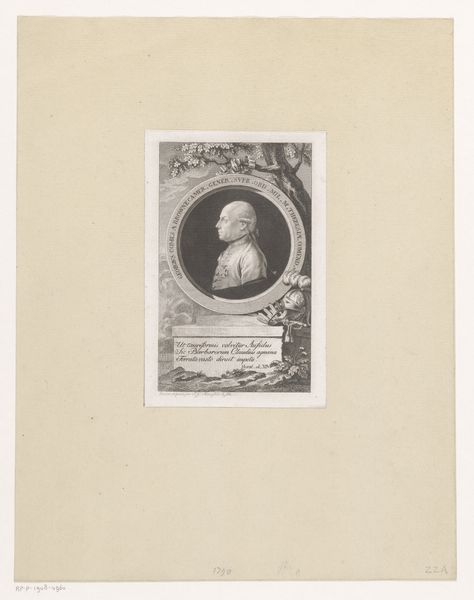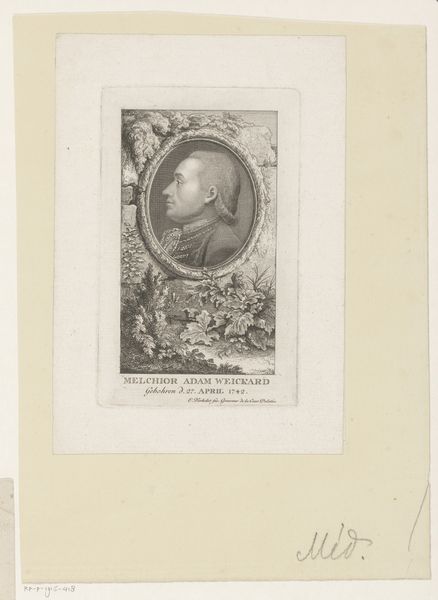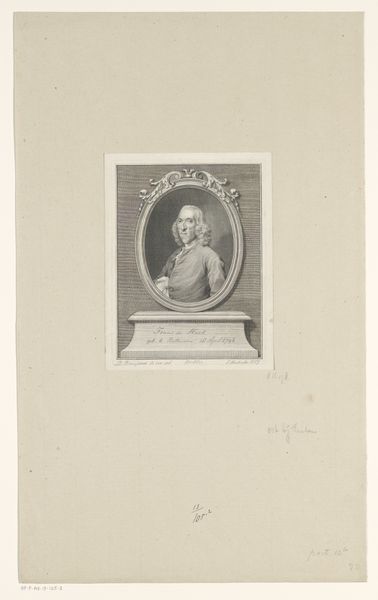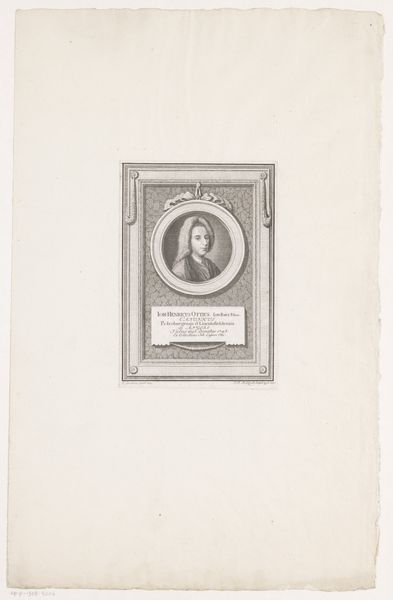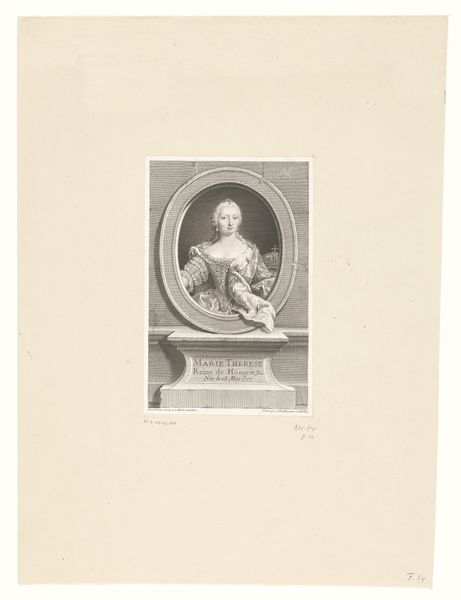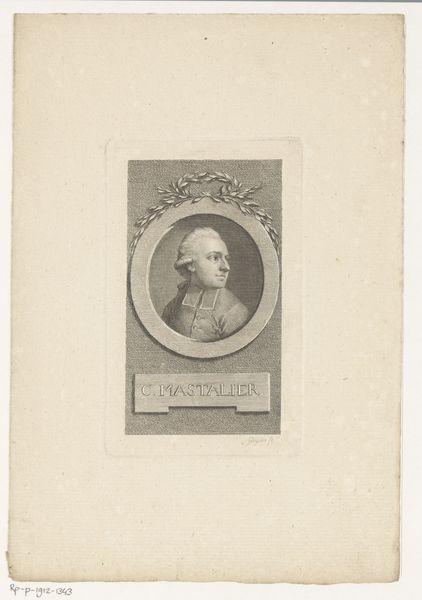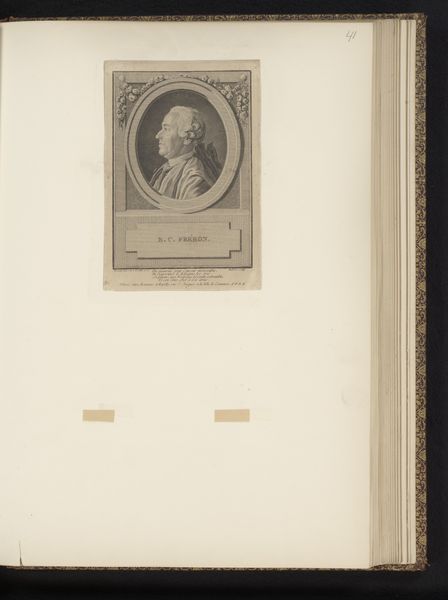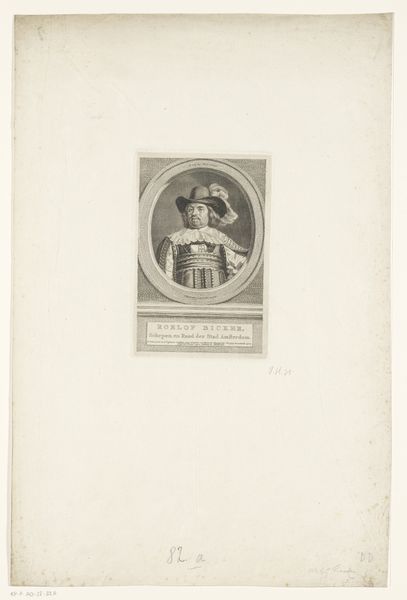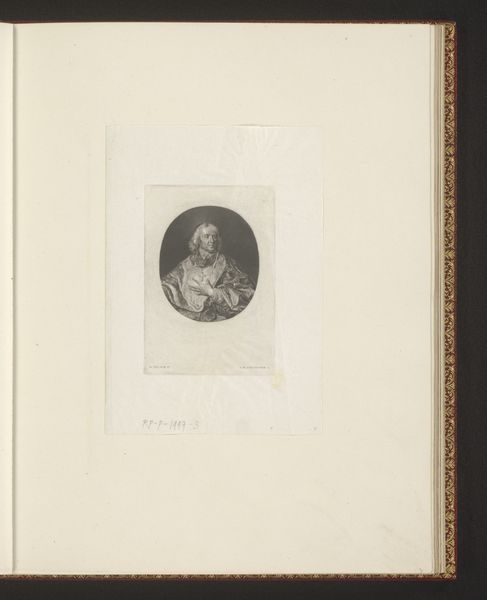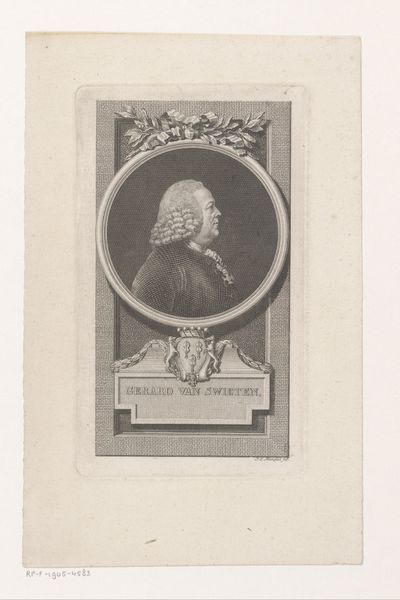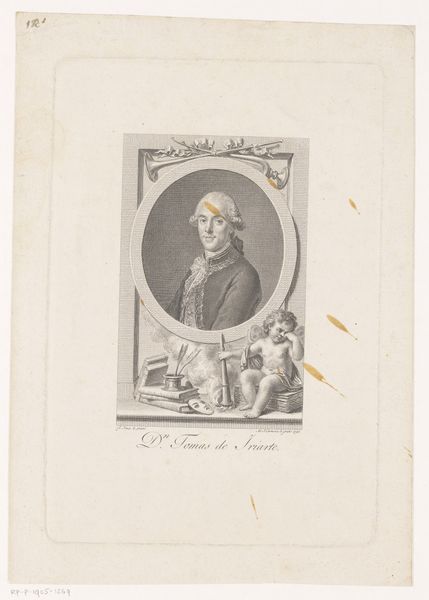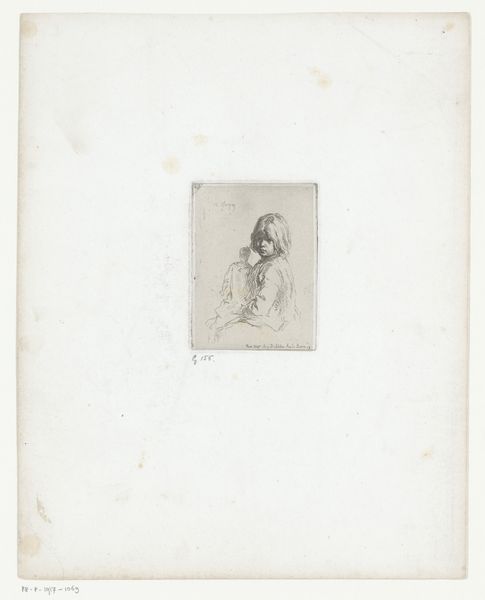
print, engraving
#
portrait
#
neoclacissism
# print
#
old engraving style
#
history-painting
#
academic-art
#
engraving
Dimensions: height 147 mm, width 96 mm
Copyright: Rijks Museum: Open Domain
Curator: Here we have a piece titled "Portret van Matthäus Mederer," dating somewhere between 1750 and 1811, created by Georg Christoph Schmidt. It’s an engraving, showcasing the Neoclassical style. Editor: It gives me the impression of power restrained, of intellectual strength quietly observed. There's a formality to the composition with its framing, yet the man's gaze is sharp, almost challenging. Curator: Indeed. Neoclassical portraiture, in particular through prints like this one, served a specific social function, solidifying the status and legacy of its subjects within a structured societal order. The crisp lines and meticulous detail—hallmarks of the engraving process—convey precision and clarity, essential to the era's ideals. Editor: And consider what’s being memorialized. A man memorialized, presumably of some standing, fixed within these aesthetic codes that signaled authority and intellect, underscoring notions of hierarchy and access. It’s a powerful declaration of identity rendered in a style which favored order above all. Curator: The oval frame adorned with a bow is interesting, it feels classical, almost ancient. These visual cues spoke to a learned audience steeped in classical ideals. These men literally framed their lives, just like their identities. Editor: Exactly. It really highlights how deeply entwined the visual language of the time was with its socio-political fabric, using these visual components that underscored a certain idea of how societies functioned and how hierarchies should operate. What we read is also carefully orchestrated for us to read. Curator: So what's left to say but consider how far visual expressions have been reformed. What kind of message we choose to convey through art about our culture and time? Editor: Precisely. By reflecting on what was visually preserved or suppressed back then, we can assess where we are headed in art, history, society and culture now.
Comments
No comments
Be the first to comment and join the conversation on the ultimate creative platform.

